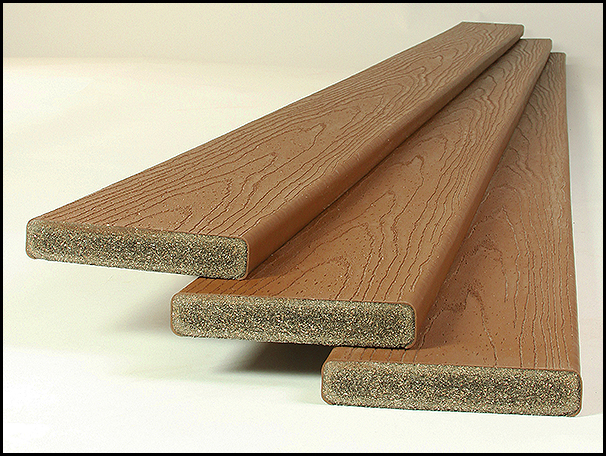
I would like to make a glider for my yard out of composite lumber. I realize that composite lumbers aren’t “wood” working in the literal sense, but I do have a couple of questions about them. For example, can I use my table saw and router, as well as my other tools, as I would normally? Are the composites readily available? – Allen Fongemie
Chris Marshall: Composite lumber is mostly a blend of waste wood fiber and polyethylene or PVC (plastic) resins, and it’s the resin component that makes it long-lasting outside. It doesn’t attract wood boring insects, absorb water or rot. You can find examples of composite lumber at any home center or contractor yard by looking in the decking and outdoor railings departments. It’s widely available, but brace yourself for the sticker shock: this “fake” lumber isn’t cheap.
There’s nothing inherently dangerous about cutting, routing, drilling and sanding composite lumber with conventional woodworking machines and sharp cutters. Since it has no grain direction (think MDF here), the material doesn’t put up much of a fight when ripping or crosscutting. But, most composites are quite dense, heavy and flexible. When you’re ripping it on a table saw, be sure to keep the splitter or riving knife in place behind the blade, just in case the board closes up on the outfeed side as you push it through the cut. Also be careful to use adequate infeed and outfeed support for long workpieces to maintain control — let me emphasize again that this stuff can be very flexible, especially once it’s warmed by the sun! The resin component also tends to gum up abrasives faster than wood does. So, go easy when power sanding in order for your sanding drums and belts to do their job.
Tim Inman: In my limited experience building with composites, I have been able to use almost all my cutting tools. Keep in mind that one part of the “composite” is plastic. So you must avoid anything that causes heat build-up. Common sense, but sometimes the “melting” issue is forgotten until after the router or blade is gummed up.
I have more experience using composite lumber, so let me share that with you. I have a wonderful set of porch furniture made from the stuff. It is fantastic. No painting or weathering, just using. I don’t even put the porch furniture away for the winter anymore. The glider bearings are all stainless steel and weatherproof, so I figure why bother? Another reason not to move the furniture seasonally is that composites are very heavy.
My porch steps were rebuilt using composites. Again, weatherproof, no paint needed, etc. But, composites will sag when they get warm in the sun. We added extra substructure framing to support the composites and enjoy the benefits of both. If you use standard wood construction dimensions, your composites will most likely distort and disappoint. I’d start with a small project and see how it goes.





